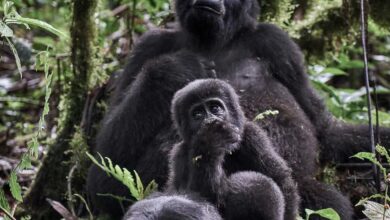National parks have important missions of promoting biological diversity
National parks around the world have important missions of preserving the nature, animals and plants to promote biological diversity, a U.S. national park ranger told Xinhua in a recent interview.

National parks around the world have important missions of preserving the nature, animals and plants to promote biological diversity, a U.S. national park ranger told Xinhua in a recent interview.
The UN Biodiversity Conference will be held in December in Montreal, Canada, focusing on protecting nature and halting biodiversity loss in the world.
“The world is faced with everlooming threats of climate change. A lot of places all around the world are in the similar boats,” Matthew Lamar, U.S. Death Valley National Park ranger, said in the interview on Wednesday.
“The idea behind national parks in the United States is to preserve the natural and cultural resources of the area unimpaired for future generations. Take Death Valley for example, we are preserving this large swath of the Mojave Desert,” he said.
Straddling the California-Nevada border, east of the Sierra Nevada, Death Valley is the largest national park in the contiguous United States, as well as the hottest, driest and lowest of all the national parks in the United States.
Death Valley recorded the world’s highest temperature of 134 degrees Fahrenheit (57 degrees Celsius) on July 10, 1913.
In 2020 and 2021, temperatures at Death Valley reached as high as 130 degrees Fahrenheit (54 degrees Celsius), which were verified as the 5th and 6th hottest days ever recorded on Earth, according to the park.
The Badwater Basin in the park features the lowest elevation in North America with 282 feet below sea level.
“Death Valley has a very unique eco system because it has one of the most extreme environments on Earth,” Lamar told Xinhua.
“It is regularly the hottest place on Earth during the summer months and is also the lowest place in North America. Still there are plenty of plants and animals that have learned to not just survive here but thrive,” he noted.
Despite its morbid name, Death Valley is home to a great diversity of thriving life, including kit foxes, bighorn sheep and reptiles. Several endemic species call this park home including different species of Pupfish, according to Lamar.
The Devils Hole Pupfish is one of the world’s rarest fish with only 263 counted today, Lamar said.
Death Valley also has dramatic changes in elevation from 282 feet below sea level to 11,000 feet above sea level.
“On the valley floor you find lots of Creosote, Mesquite, and Desert Holly, but as you move up the mountains the vegetation changes and on top of the Panamints we have one of the oldest organisms on Earth, the Bristlecone Pines,” Lamar told Xinhua.
The park is confronted with increasing threats and challenges in preserving its eco system, Lamar said.
“We have a number of invasive species that have moved into the area pushing out native populations. Feral burros are an issue competing with bighorn sheep and introduced ornamental plants such as palm trees and tamarisk use up lots of water which means there isn’t always enough for native species,” he noted.
The park has specifically dedicated staff to invasive plant management helping to eradicate invasive plants within the park, and worked with outside organizations like the Director Peaceful Valley Donkey Rescue to remove feral burros, according to Lamar.
Climate change also poses grave threats to the park.
“Nine of the ten hottest summers in Death Valley have been recorded in the last 15 years. Climate models predict that storms will become more intense and frequent, which often leads to flash flooding,” Lamar noted.
Bristlecone pines along the Telescope Peak Trail in the park are noticeably dying, he said. Bristlecones are the longest-living tree species, partially due to their resistance to bark beetles. Yet, these trees are being killed by bark beetles.
A study conducted by U.S. Forest Service in May this year concludes that drying and warming at high elevations likely made the trees vulnerable to the beetles.
“We have to combat those challenges. It is hard. A lot of places all around the world are in the similar boats,” Lamar said.
“National parks around the world have very important missions, which are the preservation of nature, animals and plants which call those areas home, and making sure they have places to thrive in this changing world,” Lamar told Xinhua.
Lamar said he has learned about China’s growing movements in environment protection, and hopes to learn more about China’s efforts in the conservation of the wilderness.






